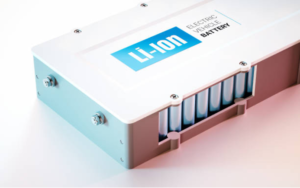APPLICATIONS OF TECHNOLOGY:
- Lithium-ion batteries and other electrochemical systems that use separators
BENEFITS:
- Low processing cost and better performance over commercial separators
BACKGROUND:
- The most expensive component by weight in a lithium-ion battery is the porous polymer separator, and 90% of its cost comes from the pore-forming process. Moreover, a porous separator provides no barriers for alleviating concentration polarization and catastrophic cell failure during fast charging. We addressed this limitation by making the world’s first Li-containing thermoplastic separator that can be processed like “plastic wraps” without the need of any pore-forming process. The newly designed ionic separator limits concentration polarization – it can be considered as a gateway for enabling fast charging.
TECHNOLOGY OVERVIEW:
Traditional battery separators are porous membranes made of polymers such as polyethylene. They are the most expensive components by weight in a lithium-ion battery and 90% of its cost comes from the pore-forming process. Researchers at Berkeley Lab have addressed this issue by making the world’s first Li-containing thermoplastic separator that can be processed like “plastic wraps” without the need of any pore-forming process. This separator mimics a commercial porous polyethylene separator where its “pores” are filled with ionic polymer chains. It is created by the spontaneous self-assembly of a PSLiTFSI-b-PE-b-PSLiTFSI triblock copolymer under heat press; PE is polyethylene, while PSLiTFSI is poly(styrenesulfonyllithium(trifluoromethylsulfonyl)imide) – a polymer chain with free lithium counterions. The resulting membranes were used as separators in lithium-lithium symmetric cells with LiTFSI solutions in EC/DMC (50/50 wt%) as the electrolyte. The EC/DMC/LiTFSI electrolyte is absorbed into the pores containing the ionic chains.
Electrochemical experiments on the symmetric cells demonstrate that the ionic separator can slow down salt transport from the cathodic chamber to the anodic chamber by a factor of 5 relative to a commercial separator (porous PE); the current through the two separators is identical. The present work suggests that ionic separators can serve as a unique gateway to reduce the concentration polarization without reducing the current, thus providing a potential solution to enable fast charging and discharging of lithium-ion batteries.
This concept is currently observed in a lithium-lithium symmetric cell. The next milestone will involve testing its performance in a practical lithium-ion battery.
DEVELOPMENT STAGE: Proven principle
FOR MORE INFORMATION:
Publication:
Xiaopeng Yu, Xi Jiang, Morgan E. Seidler, Neel J. Shah, Kevin W. Gao, Saheli Chakraborty, Irune Villaluenga, and Nitash P. Balsara. Nanostructured ionic separator formed by block copolymer self-assembly: A gateway for alleviating concentration polarization in batteries. Macromolecules 2022, 55, 2787–2796. DOI: 10.1021/acs.macromol.2c00193
PRINCIPAL INVESTIGATORS:
STATUS: Patent pending.
OPPORTUNITIES: Available for licensing or collaborative research.
SEE THESE OTHER BERKELEY LAB TECHNOLOGIES IN THIS FIELD:
Lower Cost, Nanoporous Block Copolymer Battery Separator IB-3024
Block Copolymer Cathode Binder to Simultaneously Transport Electronic Charge and Ions IB-3025
